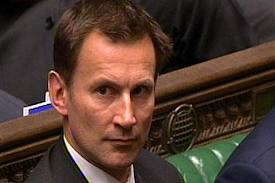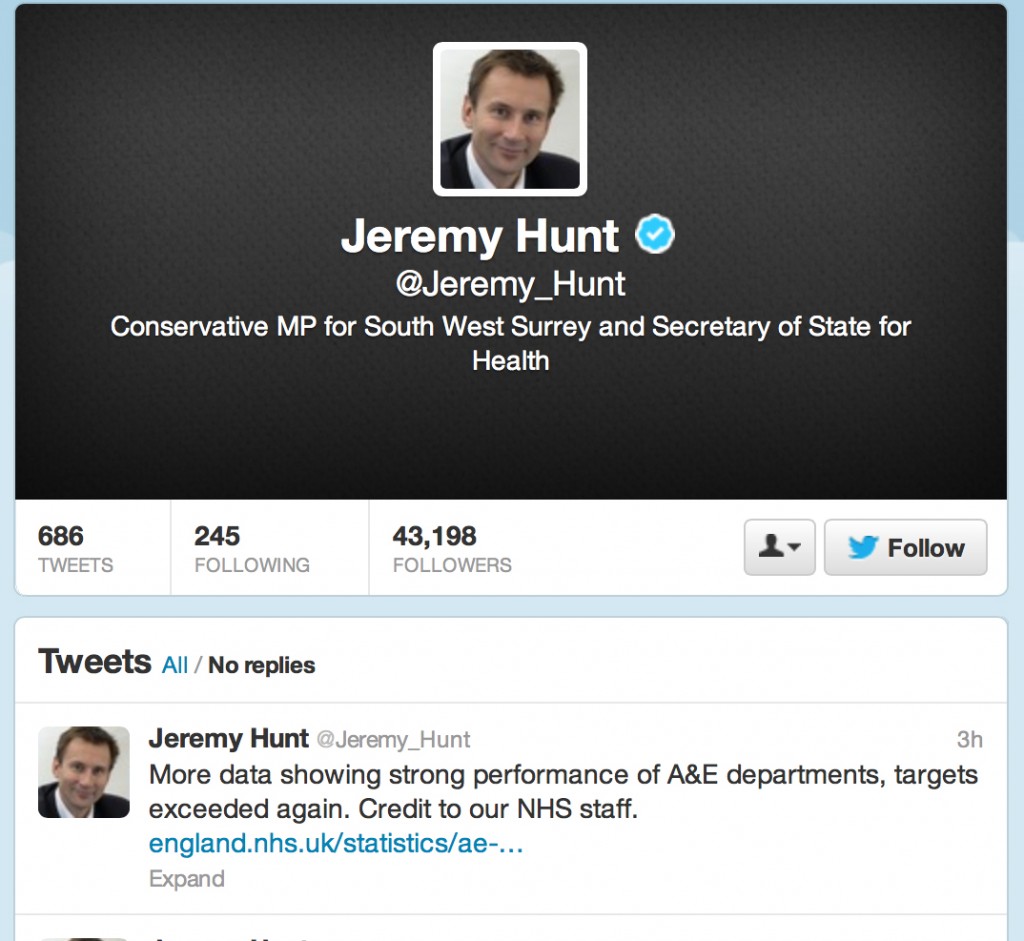Earlier this week the King’s Fund warned that waiting times for A&E patients had hit a nine-year high and the number of people waiting more than four hours to see a doctor had almost doubled since last year.
Jeremy Hunt is supposed to be the “leader” in the “A&E crisis“, having just been recruited to implement a £3bn reorganisation of the NHS which, historically, has been opposed by all the Medical Royal Colleges.
Mayor Mike Bloomberg, who won a third term, and is widely regarded as an adept city leader, but came under fire for inefficient snow removal in New York City. Most of the complaints came from residents in the so-called outer boroughs — e.g., the four that are not Manhattan. However, Newark Mayor Cory Booker has received acclaim for his response to his snowfall, despite accepting criticism on a host of other matters.
Some failures can be useful if leaders learn from them, according to Robert Mittelstaedt, Dean of Arizona State University’s business school. The three biggest causes of failures he sees are not believing data, disregarding new phenomena, and not taking responsibility for problems. Hurricane Katrina holds plenty of those lessons, according to Mittelstaedt. He points out that for years a wealth of information was available that New Orleans could not withstand a major storm, but officials didn’t act on the data. Officials then ignored information about the scope of suffering by those stranded in the city. He blamed President Bush and others for not taking responsibility and instead arguing about whose job it was to rescue people. “When you see people on rooftops, you don’t sit around worrying about whose responsibility it is,” according to Mittelstaedt.
Erika Hayes James, an organisational psychologist at the University of Virginia’s Darden Graduate School of Business,categorises five phases of crisis that require specific crisis leadership competencies in “smoldering crises“. Smoldering crises differ from sudden crises in that they begin as minor internal issues that, due to manager’s negligence, develop to crisis status. These are situations when leaders are blamed for the crisis and its subsequent effect on the institution in question. Each phase contains an obstacle that a leader must overcome to improve the structure and operations of an organisation. James’s case study on crisis in the financial services sector, for example, explores why crisis events erode public trust in leadership. James’s research demonstrates how leadership competencies of integrity, positive intent, capability, mutual respect, and transparency impact upon the trust-building process.
John Baldoni (2011) in the Harvard Business Review views that important lessons can be derived from how a ‘good leader responds to a crisis’.
- Take a moment to figure out what’s going on. The problem is that everything under the sun has been blamed for the crisis, apart from the current operations management of this Coalition, by Jeremy Hunt. Reasons cited by Hunt have included winter, “The UK Labour Party”, immigrants, women GPs, and targets. To compound the farce which has been “the blame game”, Stephen Dorrell, the Tory chair of the health select committee, very publicly disagreed with Hunt recently, over linking the crisis in A&E departments to GPs opting out of working nights and weekends.
- Act promptly, not hurriedly. A leader must provide direction and respond to the situation in a timely fashion, but acting hurriedly only makes people nervous. However, it is really in dispute whether Hunt in fact acted promptly. According to Jamie Reed MP, a recent Freedom of Information request submitted to the Department of Health shows that Jeremy Hunt had spent six months as Health Secretary before visiting his first A&E unit. When he finally got around to it, the A&E unit he visited was only yards from his own office.
- Manage expectations. When trouble strikes, people want it to be over right now — but seldom is this kind of quick resolution possible. It falls to the leader in charge to address the size and scope of the crisis. You don’t want to alarm people, yet do not be afraid to speak to the magnitude of the situation. Winston Churchill was a master at summing up challenges but offering a response at the same time. As he famously stated in 1940, when assuming office, he said,”You ask, what is our aim? I can answer in one word. It is victory; victory at all costs; victory in spite of all terror; victory, however long and hard the road may be, for without victory there is no survival.” However, the plan proposed by Hunt is neither decisive or prompt. He has announced a fundamental review of emergency care, conceding that “we have failed to give the public confidence that there’s anything between GP surgeries and A&E”. The review, which will result in action by next April, will focus on “vulnerable older people”, whom Hunt said were the heaviest users of the NHS. However, at least the review will not be a panicked response.
- Demonstrate control. When things are happening quickly, no one may have control, but a leader can assume control. That is, you do not control the disaster — be it man- made or natural — but you can control the response. This is a man-made crisis. Unfortunately, there’s an element that Hunt is still in denial over this crisis, with him having only a few hours ago tweeted:
- Keep calm. A hallmark of a crisis is its ability to change quickly: “your first response may not be your final response.” In these situations, a leader cannot be wedded to a single strategy. He or she must continue to take in new information, listen carefully and consult with the frontline experts who know what’s happening. However, his first response was to blame GPs, and this has been rebutted very robustly by the Royal College of General Practitioners. Hunt has been forced to back-track on this as the evidence to support him simply not there.
And above all Jeremy Hunt has offended the first rule of crisis leadership: he has not taken responsibility for the crisis personally, nor vicariously on behalf of the current government.



